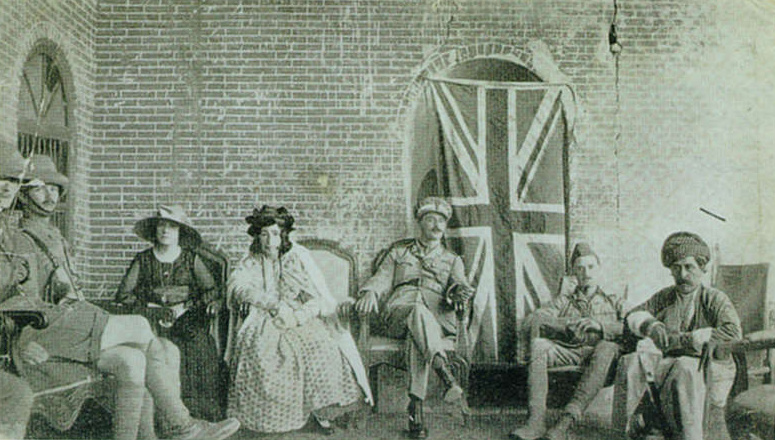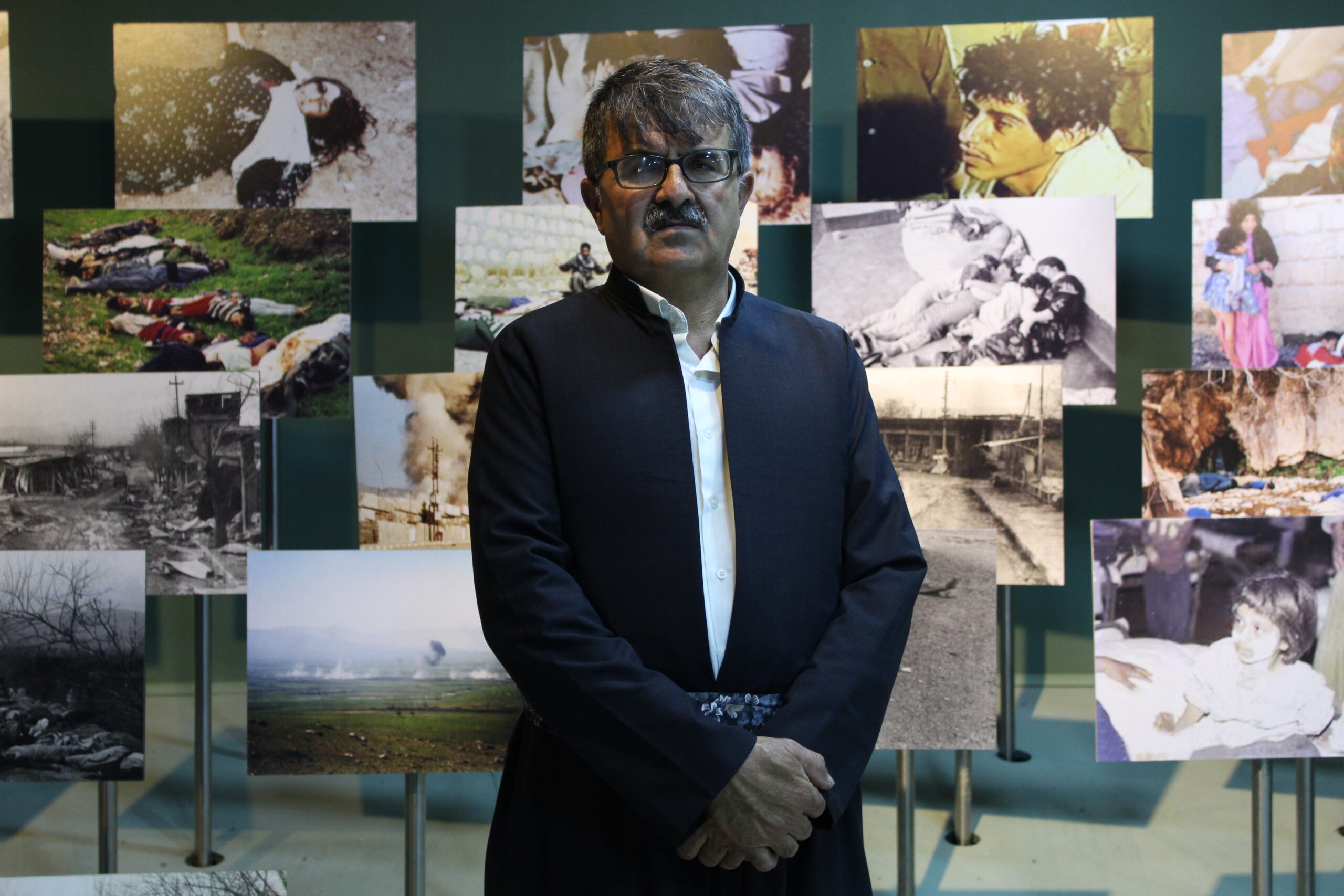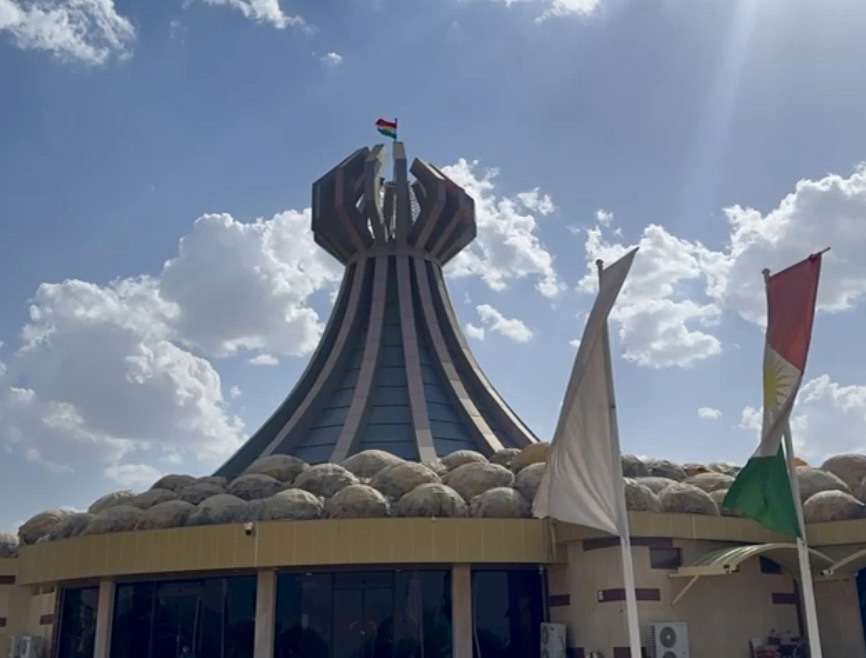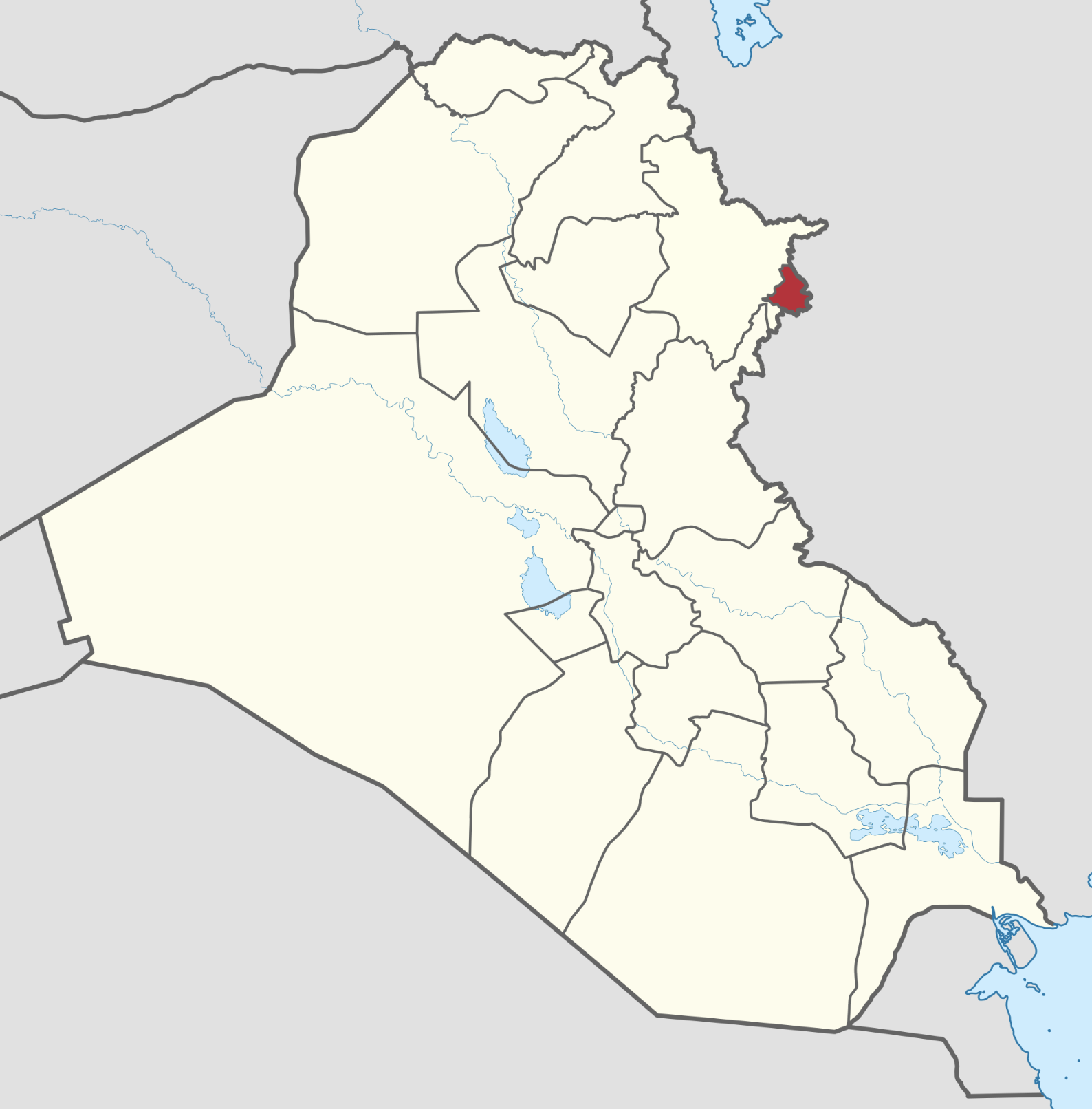
This travelogue is just one part of my dispatches from Erbil. You can read them all on the project’s landing page here.
Sunday — Sept. 22, 2024
We arrived in Halabja around midday. My first impression of the city is of narrow, mostly empty streets; I imagine everyone is inside somewhere, out of the blazing sun. But I don’t have time to investigate further right now because I am already running late to my first appointment of the day.
Moments later, I’m sitting across from Mayor Nuxsha Nasih, 46, who wears a dark pantsuit and carefully styled hair. Nasih made headlines across the region in 2016 when she became the first woman to be appointed mayor of Halabja.
But she’s not the first woman to govern here.
This region was once ruled by the formidable Lady Adela Jaff, who left a lasting mark on Halabja, building a thriving bazaar, planting public gardens and establishing a court of justice. During World War I, she interceded on behalf of captured British soldiers and impressed British officials, who called her “princess of the brave” and “a queen without a crown.”
Nasih keeps a portrait of Lady Jaff in her office.
“At the time, it was a pretty male-dominated society. And she was holding a government position, holding meetings with British officials, she was promoting the notion of having women study,” Nasih said.
“She lived in an entirely different era.”
 Percival Richards Wikipedia Creative Commons
Percival Richards Wikipedia Creative CommonsLady Adela Jaff (center) meets with British officers in 1919.
Today, women lead multiple government departments in Halabja, including the province’s office of human rights and the General Directorate of Municipalities. The province also boasts a comparatively low rate of violence against women: Nasih tells me there has not been an “honor killing” here in more than two years. An honor killing is when a person (usually a woman or girl) is murdered, typically by members of their own family, because they believe the victim has brought shame to the family, or otherwise damaged the family’s reputation.
Halabja is the fourth and smallest governorate in Kurdistan, with a population of just 140,000. Compare that with the next largest governorate, Sulaymaniyah, which has a population of around 850,000.
“You might wonder how a place with such a small population can qualify to be a province. To answer that question, I’d go back to 1988,” said Nasih.
On March 16, 1988 Iraqi forces launched a devastating chemical attack on this small city, killing about 5,000 people and injuring 2,000 more. Graphic photos and videos of the casualties circulated widely: streets full of the bodies of men, women and children who had died trying to escape.
 Rose Gilbert WPLN News
Rose Gilbert WPLN News Luqman Abdulqadir stands in front of photos of chemical attack victims at the Halabja memorial. Abdulqadir is head of Halabja Chemical Attack Victims Association. He was badly injured by the 1988 attack and lost several family members, including his mother, wife and younger siblings.
Nasih, then 10 years-old, remembers that time vividly. In the days leading up to the chemical attack, the Iraqi army repeatedly bombed the city with conventional weapons. Nasih’s family lived in a nearby town, and she remembers that many of her relatives fled Halabja to stay with them.
Then came March 16. More than 45 members of her father’s family were killed in the chemical attack. Nasih told me that one of her cousins, a handsome young student at the University of Mosul, survived but “lost his mind” and never recovered. Her mother lost two nephews, whose bodies were never found. For years, scammers have contacted the family, saying they knew where the missing children were and offering to return them — for a fee.
“We have countless stories like this,” she said.
More: One Halabja survivor shares his story in WPLN’s new podcast, The Country In Our Hearts, episode 1: “The Enemy Within.”
And it was those stories, that trauma, that led to Halabja being made Iraqi Kurdistan’s fourth province in 2014, despite its small size.
“It was like paying reparations for the people of Halabja, making Halabja a province” she explained.
However, due to the complicated and constantly embattled autonomy of the Kurdish Regional Government, Halabja is still not an official province of Iraq. At least, not yet.* In a few months, the Iraqi parliament will vote on whether or not to make Halabja the nation’s 19th official province of Iraq. This is a key distinction, because it is Baghdad — not Erbil — that controls the budget. So the hope is that this vote will bring more funding, funding that Halabja desperately needs.
The 1988 attack left lingering wounds. The thousands of survivors live with medical issues including burns, blindness, breathing problems and increased rates of cancer and birth defects. Problems that require specialized treatment, which requires money and training. Although Halabja has received aid from the U.S., as well as several European countries, major gaps in coverage persist.
 Rose Gilbert WPLN News
Rose Gilbert WPLN News The 100-foot-tall Halabja Monument.
That one, terrible day changed Halabja forever. Some of those changes are glaringly obvious: the buildings that had to be rebuilt, the sprawling cemetery of victims, the memorial. Others are more subtle.
“Before 1988, this used to be a city for music, for cultural activities. We had women in prominent roles as well before 1988. This used to be a cultural city, more progressive. It was a city that always spoke up,” Nasih said.
She asked if I’d noticed that the women in Halabja are generally more covered-up than women in other parts of Kurdistan. I told her that I had: while the headscarves and modest clothing are common across the region, Halabja was the first place I’d seen so many women wearing more comprehensive, chador-like garments.
“People sometimes ask why do a lot of women in Halabja wear headscarves? They think we’re all extremists,” said Nasih, who wears her hair uncovered.
She explained that after the 1988 attack, many people fled to Iran, where they adopted the stricter modesty requirements enforced (still, and very contentiously) by the Islamic Republic. And afterwards, Halabja was governed by a conservative Islamic party until 2003, when the United States invaded Iraq.
“I don’t want to say all the people who were opposed to [the Islamic party], but they had very little support among the public,” she told me “Because of their presence here, Halabja took a back seat in terms of progress, unfortunately.”
Nasih clarified that the current Islamic parties in the region are legitimate parties within the Kurdish government that serve their constituents. As I touched on in my last dispatch, Kurdistan’s competing parties are a touchy subject.
 Wikipedia Creative Commons
Wikipedia Creative Commons The Halabja governorate, shown here in red on a map of Iraq.
I asked Nasih about her hopes for her province’s future.
“First and foremost, I want my people to have the services they need on a daily basis. Secondly, I want to turn Halabja into an agricultural and tourism hub for the region,” she said.
The province receives around 350,000 tourists every year, 60% of its land is devoted to farming and it’s a major gateway for trade with neighboring Iran. Nasih hopes that, with some additional investment, Halabja can be a key player in the Kurdistan Regional Government’s efforts to diversify its oil-dominated economy.
But the mayor was clear that her ambitious vision for Halabja would never include forgetting about its painful past.
“It’s really important that people don’t forget their history while we progress. Because we believe it’s the history that creates the future,” she said. “If you don’t have history, you won’t have a future.”
*An update
On April 14, 2025, about six months after this conversation, the Iraqi government officially recognized Halabja as its 19th province. Nuxsha Nasih was appointed as acting governor — the first woman to serve as governor in Iraqi history.


